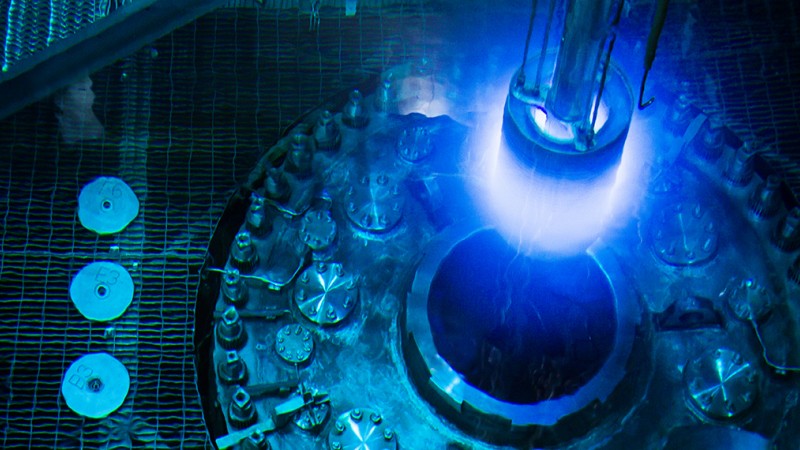The High Flux Isotope Reactor at Oak Ridge National Laboratory is the highest flux reactor-based source of neutrons for research in the United States, and it provides one of the highest steady-state neutron fluxes of any research reactor in the world. Operating at 85 MW, an average fuel cycle for the HFIR generally runs for approximately 26 days—depending on the experiment loading for that cycle—followed by a refueling and maintenance outage for various scheduled calibrations, modifications, repairs, and inspections.
The reactor underwent routine refueling in July 2015, as seen in this photo. While submersed, the spent fuel emits a luminescent blue glow due to Cherenkov radiation, in which shedding electrons move through the water faster than the speed of light in water. Once removed from the reactor, spent fuel is then relocated into an adjacent holding pool for interim storage. Image credit: Genevieve Martin/ORNL




